User Segmentation for Your App
"Segmentation is important for your app! Make sure you’re segmenting your users!"
Thanks, everyone! But what does that actually mean? How do you do it?
Part of the issue is that there are many different ways and use cases to segment your user base.
We’ll look at it:
.avif)
Optimizing Paid UA
In the early days of Facebook ads, you had all these interests and demographic segments, and people would spend endless time finding audiences that converted.
That’s all out the window. The majority of ad targeting now is done by the algorithm, and it’s up to you to feed the algo the right signals.
The main segmentation levers you have with most networks now are age and gender. Often, younger ages will convert worse and you want to exclude them.
To get more sophisticated, you can also optimize the data you send back to ad networks to force them to optimize toward the highest value conversions. This is more viable at higher users volumes. When you’re getting started, you want as much signal as you can get! (now being called “signal engineering”)
I think we’ll dedicate another full post to this type of optimization for ad networks.
Optimizing Monetization
After you acquire a new user, you want to convince them to pay, right?!
Let’s look at segmentation related to monetization.
A simple way to get started is to show different offers to different types of users.
If a new user doesn’t engage with anything in your onboarding and presses “skip” or “other” for every question, this is likely a signal of lower purchase intent.
It’s unlikely they purchase at full price, so you could try offering them a discount.
This is called behavioral segmentation. Segmenting users into different groups based on early behavior.

Or, they come from a typically higher value acquisition channel for you. You could try showing this group a higher-priced offer, or a non-discounted offer.
You can do the same type of segmentation based on demographics (geo, age, device, etc). I’d start by looking at what groups/behaviors correlate with higher conversion rates, and then try running some tests to validate.
Remember, test, test, and test some more. These aren’t sure-fire wins, and performance will vary based on your product and user base.
Another powerful segmentation data point is zero-party data. The name is kind of silly, but essentially, it’s info your users tell you directly.
Maybe you know that everyone who comes into your app who has a goal of, “Better sleep” converts at a 2x higher rate.
The common “What’s your goal?” question during onboarding often correlates with different conversion rates, retention, or usage levels.
Your product inherently solves a certain type of user's goals better than others. Can you figure out early in onboarding who these are?
Adjust plans, pricing, and packaging based on users’ needs and problems, and you find a nice win.
Understanding your user base
Maybe I should have started here, since you need to understand your user base before you optimize…
An easy way to start to understand your user base is to segment it by a lot of the values we’ve been talking about.
If you’re looking at everything as an average or aggregate metric right now, it means you have an incorrect understanding of what’s really happening.

At this point, you’re either thinking:
“Hmm, looks like I have some work to do”,
or
“Nice, yeah I’m already doing that!”
If you’re in the first group, I’ll tell you how I’d get started.
We want to start by looking at a few key metrics, a few key segments, and then look at how things change.
Key metrics:
- Retention (D1, D7, D14, D28)
- Conversion (Trial starts, trial conversion)
- ARPU (Average revenue per user)
- Activation rates
- Don’t know your activation metric? Start with a few key early product actions. You can also check out this article from this cool guy I know here: https://www.retention.blog/p/deep-dive-into-activation-and-retention
- Renewal rates
- Cancellation rates
Then, we’ll want to segment these metrics by the following groups:
- Demographics
- Age, gender, location
- You may not have all of these, so use what you have
- Platform
- iOS, Android, web
- Attribution source
- organic, paid, ASA, Meta, Google, TikTok, etc.
- Zero-party data (still a silly name)
- User goals
- Other inputs
- Early user behavior and actions
- Using certain features, looking at certain content, sharing info, etc.
- There is some overlap here with “activation metrics”, so just be conscious of this
After we’ve created definitions of all of these, we can start building analyses.
First, we’ll create funnels or conversion charts for all of our key metrics. Then, we’ll create multiple versions of these charts adding our different segments.
Our goal is to be able to accurately answer questions like:
- How does retention change with age and gender?
- How do conversion rates change based on user goals?
- What early user actions lead to higher trial conversion rates or activation rates?
We’re slicing and dicing our user base app to uncover the real behaviors.
So, based on what we shared in the monetization section, you should have some ideas for next steps after all of this analysis.
We always want analysis to have insights and outcomes.
Product prioritization and feature expansion
This is a nice segue. We now understand our userbase, we have some ideas for monetization-based tests, but how else can we use our newfound insights?
Figuring out what feature to improve or build next is hard. If you understand the features that drive retention, it should be a little easier!
An ideal insight that could have come out of our analysis is something like, “Users who listen to a piece of sleep-focused content end up having 12% higher D28 retention.”
There is always the chicken or the egg problem. Do people who are naturally inclined to use our product listen to sleep content, or does the sleep content cause stronger retention?
Our goal here is to prove these actions are “causal.” Remember your math teacher saying, “correlation doesn’t equal causation”?
The best way to do this is through experimentation. If you can get more users to engage with the sleep content, does that improve the retention of those users too?
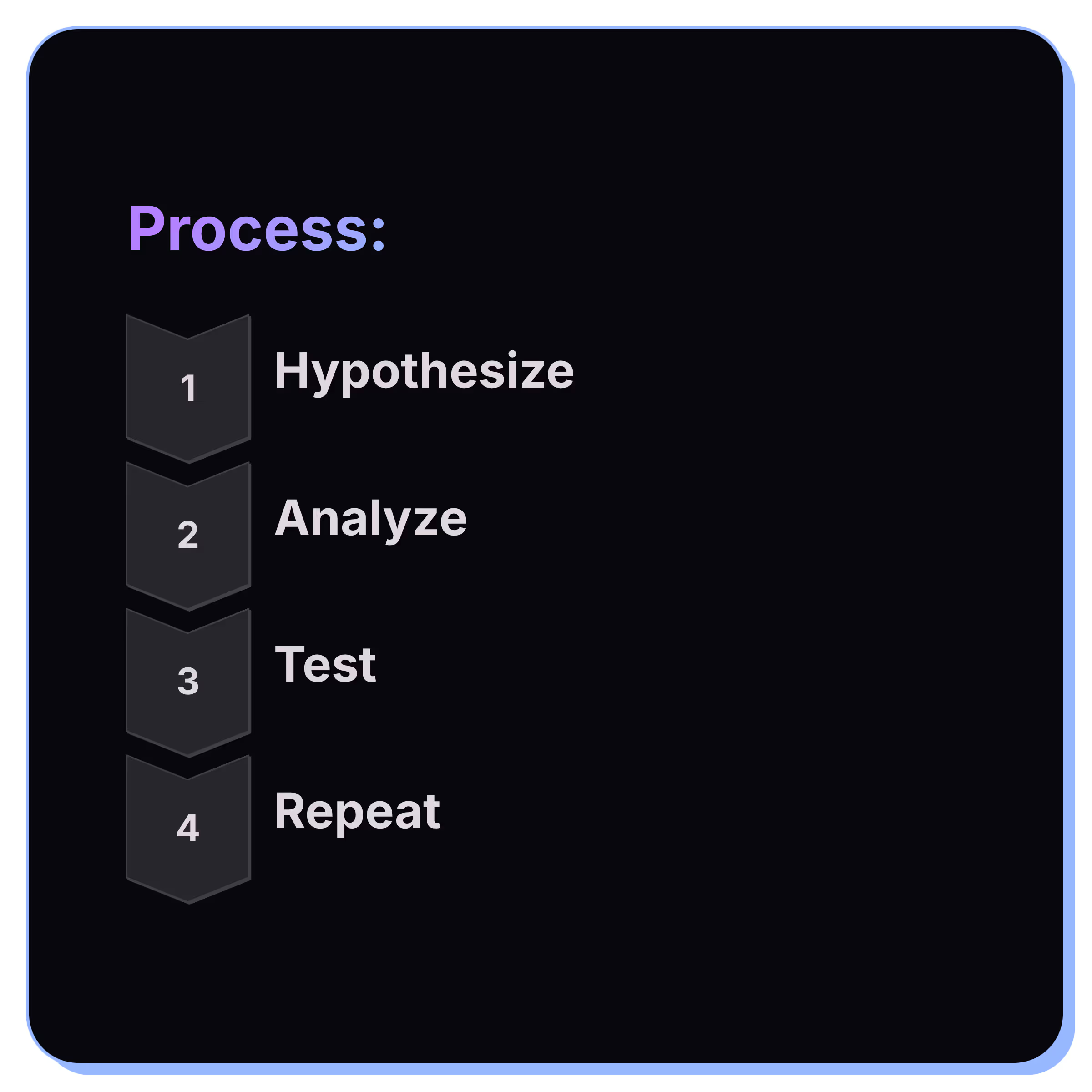
Make sure you ground your analysis not only in what features lead to retention or monetization, but also how many people are actually doing these actions!
If usage of this feature leads to 50% D30 retention, but only 3% of people do it - do you care? Likely no.
Back to the chicken or the egg, use common sense!
Phew, that was a lot. But we’ve got more.
We’ve already talked about retention, but let’s dive in a little deeper since it’s so important.
Retention is not created equal
To start, you need to segment iOS and Android (and web, if you have that). You should analyze these as separate products since the behavior is usually meaningfully different. Nearly every metric should be segmented by platform.
When someone comes to me and says, “We saw a 5% retention lift,” but doesn’t specify the platform, I know we’ve got some work to do.
Your goal with your product is to start to have other segments that instantly come to mind when looking at results.
Retention and usage patterns vary meaningfully within your user base, so thinking about your product or user base as a homogeneous (good word, right?) group is flawed.
Another example could be a language learning product. Along with platform, you may have students, professionals, and travelers. These user groups have completely different goals and needs, so it’s obvious that their behaviors would be different.
Do you know these user segments for your product?
Outside of platform, I typically like to segment retention by behavioral groups more than demographic groups.
I will not take credit for this, but it’s a great illustration of the flaws in demographic segmentation:
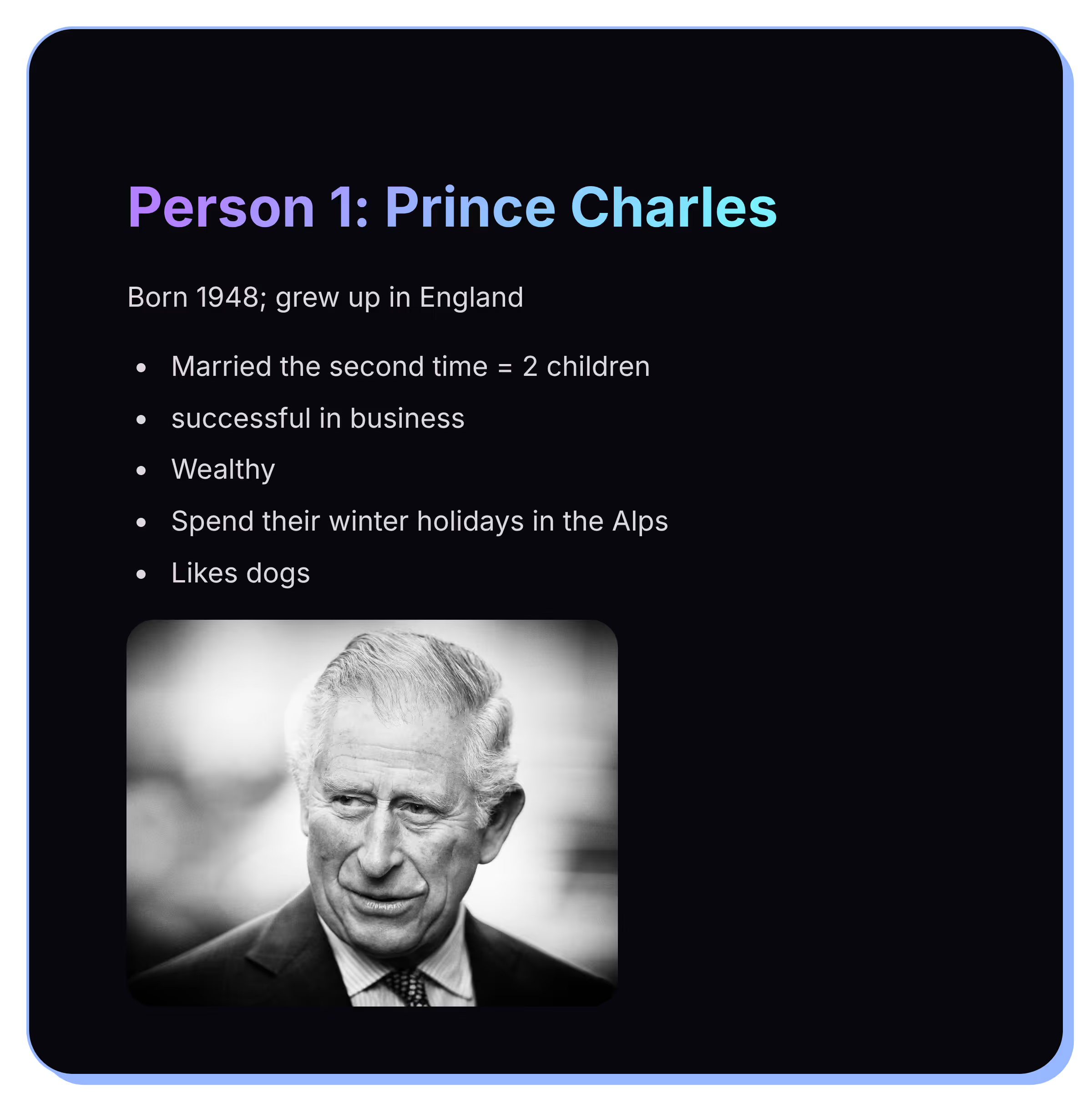
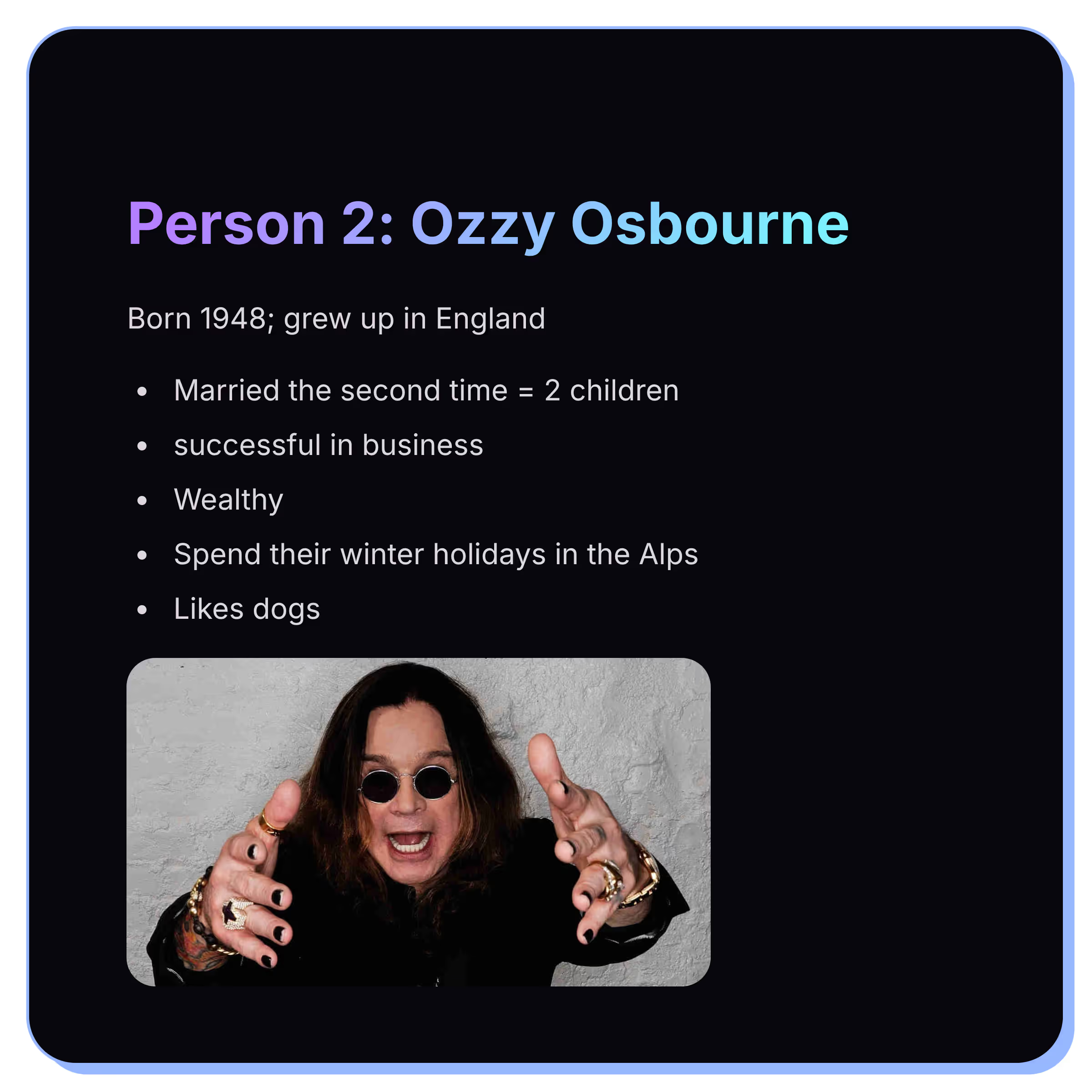
Your goal is to have dashboards that monitor retention and conversion by a number of segments. Start with platform, and then try to add another behavioral segments that you continually monitor.
Another name here could be personas. Honestly, it’s tomato, tomato. Hmm, that expression isn’t quite as effective in writing…
Let’s circle back to paid user acquisition for a second.
Understanding what leads to better retention can also be useful optimizing paid UA. Ashley Black shared how they improved Google campaigns by finding out what user actions led to better engagement and retention, and then sent those as conversion events to optimize campaigns.
One other variable for segmentation we haven’t talked about is time!
Not the time of day, but when did a user join?
My favorite chart to understand retention is the cohort analysis broken down by user install date.
.avif)
Why should I care?
These are often used to understand different acquisition cohorts.
By looking at the behavior of all the users who joined in a specific week, you can understand how the changes you’re making are improving or hurting your retention.
Or you can look back in time to see how campaigns you launched in the past affected the longer-term retention of those users.
Grouping users into cohorts allows you to isolate changes in conversion or behavior. Looking at averages or data in aggregate will usually be misleading and not tell you the whole story.
What do we see?
- The first question we should ask is what happened the week of June 19th?
- Looking deeper, we see that week 1 retention was decreasing for the three previous weeks. Maybe a product change was released in the week of May 29th that was fully rolled out by the week of June 19th?
This chart doesn’t tell you specifically what’s wrong or what’s going well, but it shows you where to start looking. It’s a great high-level view of your product retention.
This same chart could be segmented in different ways to understand not only the performance of new users but also by something like geo or customer type.
I love A/B Testing!
But A/B testing is possibly the most underutilized segmentation opportunity.
The normal pattern of behavior is: “Let’s A/B test this. Darn, it didn’t work. Or, great, it won! Roll it out to everyone!”
In reality, the results of your A/B test are much more complicated.
It’s more similar to how we were talking about retention above. You have a test result, and it was inconclusive. It showed a small lift, but the lift wasn’t stat sig. So now what?
Time to segment!
Not segmenting results by platform? This is the last time I’ll say it…
Your key personas and the segments you defined in the understanding the user base section are also valuable.
Language, country, age, and gender are also good to use. I’ll also try to segment by user goals if that data is available.
- Often we’ll find something like:
- This test is stat sig winner for the following audiences:
- US English speakers
- users above 30
- Users with the goals of “Improve health”, and “lose weight”
- This test is stat sig winner for the following audiences:
This will lead to understanding what is actually happening with your A/B test.
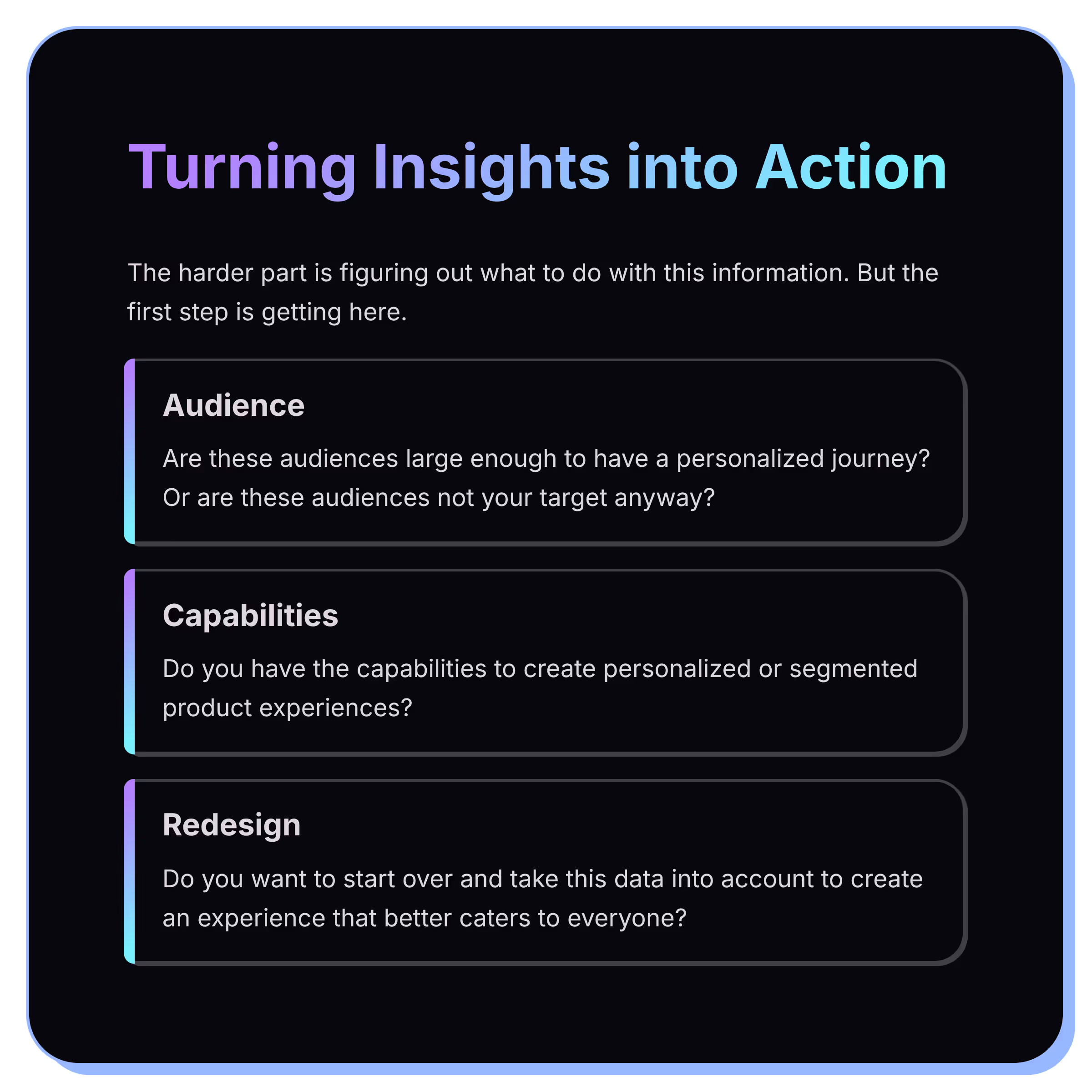
Unfortunately, I can’t answer these questions for you.
Segmentation for Lifecycle Marketing
Segmentation for email and push notifications is pretty widely talked about and so I won’t go into as much depth here since there is lots of material out there already.
Here is an article I wrote a while ago about the segments to start with for your push notifications: 2024 Push Notification Quick Start Guide
We know we shouldn’t send the same message to everyone, but this is one of the things that’s easier said than done.
To start, think about active vs inactive users, and free vs paid users.
Then you can add in your persona segments.
One interesting thing to think about is that users will give you information if you ask questions during your onboarding flow, but then their behavior doesn’t always accurately reflect their inputs.
Lesson: Use user inputs for early personalization and segmentation, but layer in their actual in-product behavior over time because that is more relevant and should eventually override user preferences.
Example:
- For a meditation app: 75% of users selected “Improve sleep” as a goal, but only 45% of users ever did a “Sleep meditation” You should eventually get the hint that they don’t want that type of content, or that’s not when they want to use the product
- At the same time, you should try to expand use cases for your product to integrate it more into their lives and so they get more value. This is a fine line and a judgment call - recommend new relevant features, but don’t overdo it to the point of annoyance.
Product Personalization
Real personalization is not segmentation. Real personalization is 1:1 and creating unique experiences for each user.
There is a blurry line between personalization and segmentation. More often than not, when people talk about personalization, it’s simple rule rule-based segmentation.
This all gets a bit pedantic. If our goal is creating a better experience for our users, then who cares what we’re actually doing?
In this context, I’m going to talk about product personalization in the context of creating segmented or different experiences for different users. Not every user sees the same experience.
Product personalization is tricky. Full stop.

Unless personalization is part of the core value of your product, it often follows a certain level of product maturity.
You start with a simple focused product experience, and you slowly iterate into more personalized experiences based on testing and learning about what works well.
It can be quite hard to guess what the perfect personalized experience should be for everyone at the start.
Or ignore everything I said and bolt in an LLM to create real per-user personalization since this actually much easier than it was a few years ago 🙂
Generally, I think it’s better to start with simple segmentation/personalization in certain areas of your product.
For example, this could be a section of user preferences or recommendations based on these preferences. Or it could be content that a user has recently listened to, used, done, Liked, etc.
But for some products, the value is the personalization and preferences, so take this all with a grain of salt.
On Spotify, you create playlists to listen to the music you want. If they just showed all the music in the world, of the top 100 charts, every time you opened the app, it wouldn’t be a great product.
Or if the product is marketed as “Personalized workouts for you”, clearly this is what people are expecting and you need to show something personalized.
This gets into a grey area of faux personalization.
Most users will never know what another user’s experience looks like, so a lot of apps market “personalization” but it’s not real, it’s pretty generic, or just simple segmentation where there are 3-4 different options you can receive.
This goes back to the fact that creating actually useful personalization and recommendation algorithms isn’t simple when you have a lot of content options and takes work to get right.
To summarize, don’t jump into personalization blindly. Start to understand which user segments or personas perform differently, and use that to inform where the personalization opportunities are.
Personalization and segmentation aren’t the same, but one can lead to the other.
Segmentation is not always easy or straightforward. You should have a better path forward and a better understanding of the gaps in your current setup and analysis now.
Segmentation is critical to truly understand what’s going on with your product and users. But most discuss it with very surface-level conversations.
There is always more to dig into here, so I hope you found this valuable!





















.svg)
.svg)
.svg)
.svg)
.svg)
.svg)

.svg)
.avif)

.svg)

.svg)

.svg)

.svg)

.svg)

.svg)

.svg)

.svg)

.svg)
.svg)
%20(1).svg)

.svg)
.svg)
%20(1).svg)

.svg)

.svg)
.svg)
.svg)
.svg)
.svg)
.svg)
.svg)
.svg)
.svg)
.svg)
.svg)

.svg)

.svg)
.svg)
.svg)

.svg)
.svg)
.svg)
.svg)
.svg)
.svg)
.svg)

.svg)

.svg)
.svg)
.svg)

.svg)
.svg)
.svg)
.svg)
.svg)

.svg)

.svg)

.svg)
.jpg)


.svg)
.svg)


.svg)
.avif)

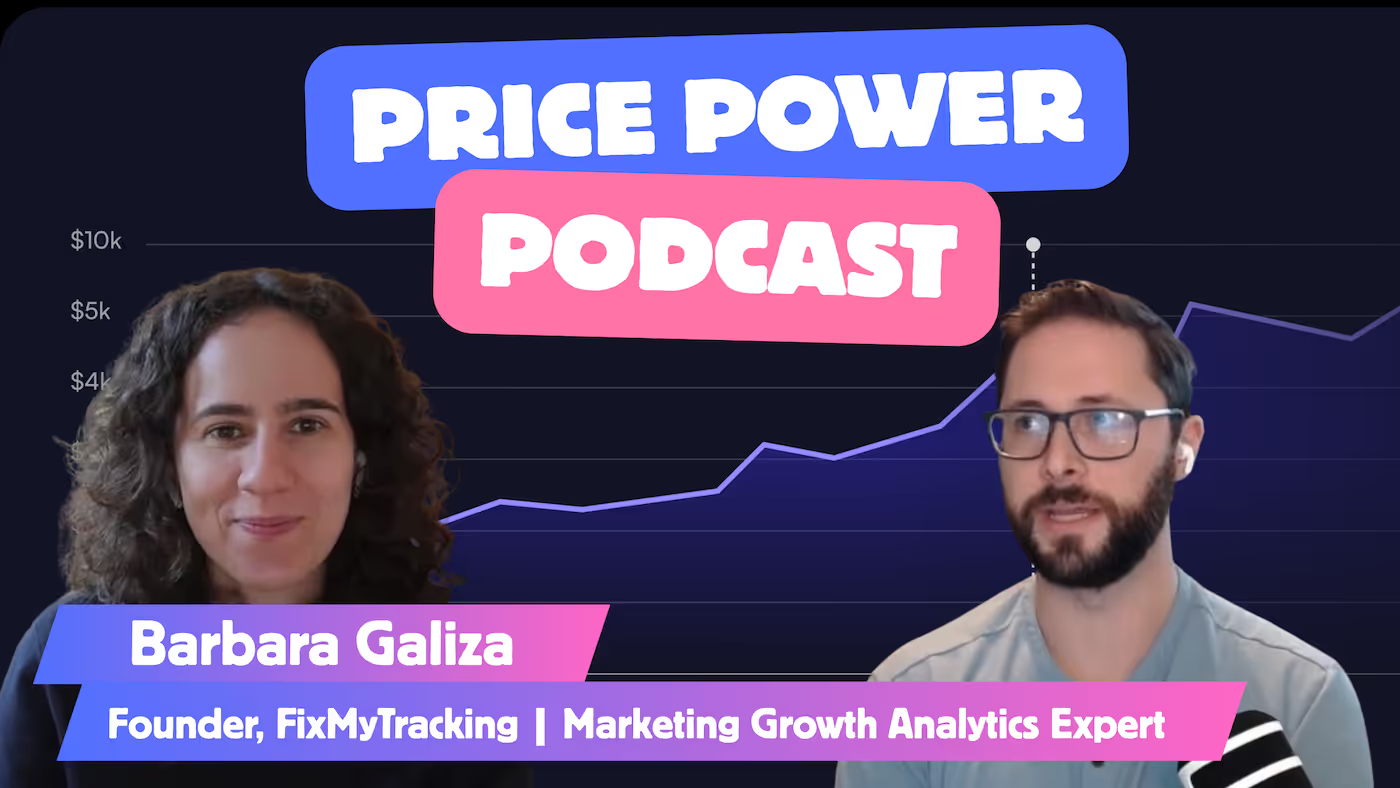
.avif)
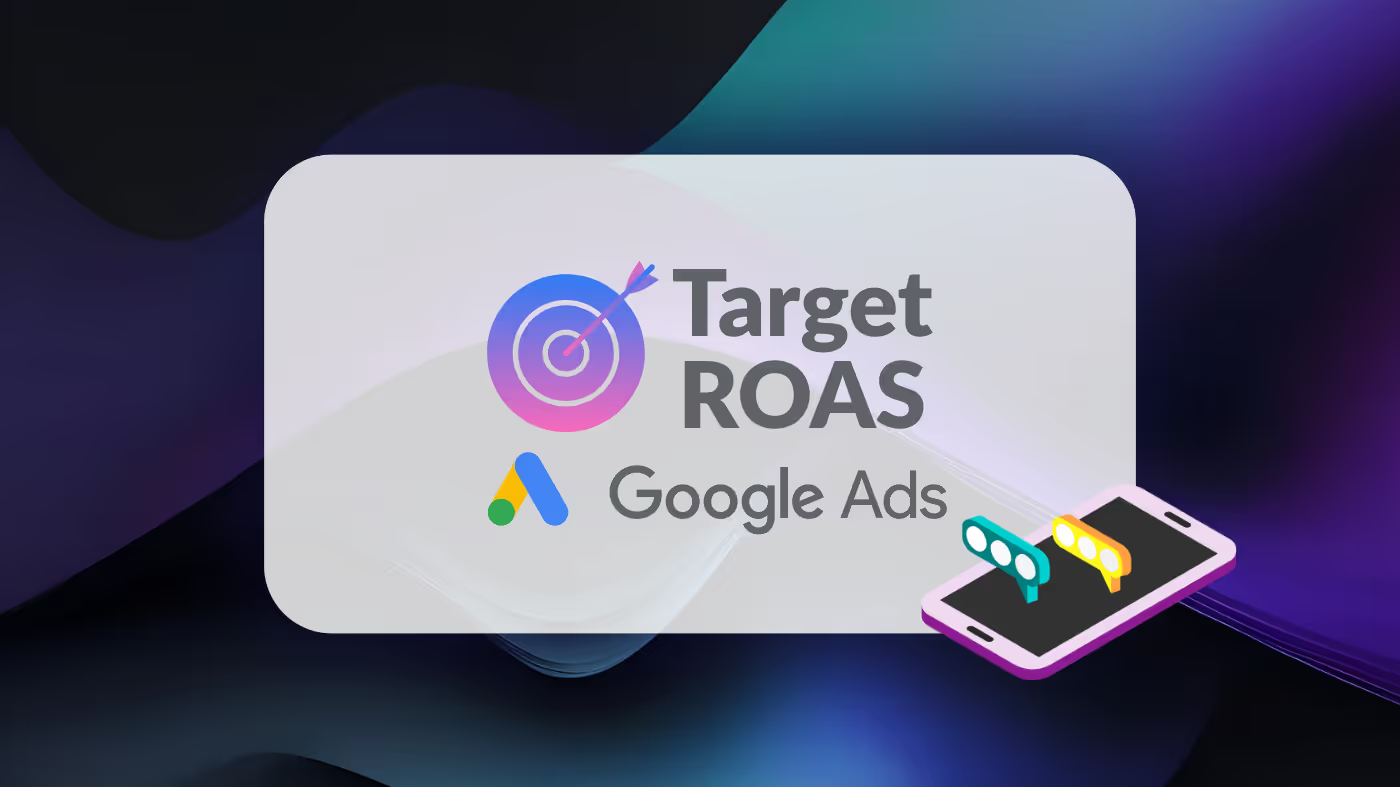
.avif)


